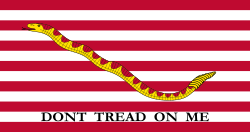The USNS Rappahannock
When the first reports flashed over the wires Monday that the USNS Rappahannock fired a .50 caliber machine gun at a fast-approaching craft in the Persian Gulf, the first thought that flashed through many minds was: Thank God – another USS Cole averted.
But in the hours after the shooting, it became increasingly clear that the small craft approaching the largely civilian-manned replenishment oiler wasn’t a wave-skimming bomb but a fishing boat, perhaps piloted by a drunk or deranged captain, or someone suffering from heat stroke.

wiki
But how the heck are armed sailors — with the fate of their vessel, not to mention their shipmates, possibly imperiled — supposed to react? “In accordance with Navy force protection procedures, the sailors…used a series of non-lethal, preplanned responses to warn the vessel before resorting to lethal force,” the Navy’s 5th Fleet said in a statement from its base in Bahrain. The Navy tightened security regulations in the region after a small inflatable boat approached the USS Cole in Aden harbor in 2000 and exploded alongside, killing 17 sailors.
The shooting left one Indian fisherman dead and three seriously wounded, the United Arab Emirates said. The event occurred about 10 miles off the UAE coast, near its port of Jebel Ali.
Tehran denounced the attack. “We have announced time and again that the presence of foreign forces can be a threat to regional security,” Iranian foreign ministry spokesman Ramin Mehmanparast said on state television. “Certainly regional countries with the help of one another can provide security in the best possible way. If they join hands, with their defensive capabilities, they don’t need the presence of foreign forces. Anywhere where you see insecurity we have always seen the hand of foreign forces there.”
The sailors who fired had grounds for concern, given their location. They fired just beyond the Strait of Hormuz, inside the Persian Gulf. Navy officers have said for years that Iranian speedboats routinely buzz U.S. ships in the region.
“It’s clear that the Iranians have taken an approach in which they are going to attempt to use small boats, swarms, cruise missiles, mines, perhaps suicide boats, small submarines,” Vice Admiral Mark Fox said last year, when he was commanding the Navy’s 5th Fleet, responsible for the Persian Gulf. “They are doing everything they can to create capability in what we would refer to as an asymmetric fashion against our conventional superiority.”
But by late Monday Washington time, it was clear the boat wasn’t Iranian.
The firing was similar to the 1988 downing of Iran Air 655, a civilian jetliner shot down by the USS Vincennes in 1988 after the warship mistook it for a threatening Iranian F-14. All 290 aboard, including 66 children, died.
That’s what happens when you bring firepower to a troubled corner of the world and warn all comers not to trifle with your presence. Meanwhile, in related news, the Pentagon announced it is dispatching a second aircraft carrier to Iran’s ‘hood several months early to ensure there will be a pair of U.S. flattops in the unsettled region for the foreseeable future. Iran has repeatedly threatened to shut down the strait — through which much of the world’s crude oil flows — as tensions between Tehran and much of the rest of the world simmer over its nuclear-development efforts.


